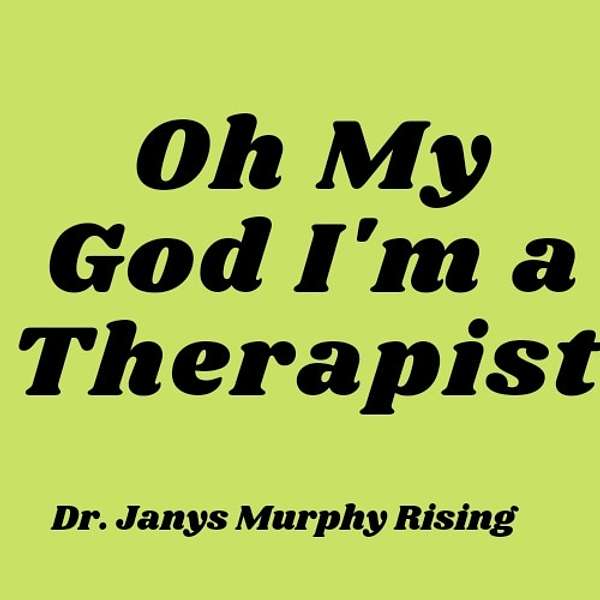
Oh My God I'm a Therapist
Oh My God I'm a Therapist
Body Centered Practice Series Part Two- Scanning
This episode is part two of a nine-part series of body-centered practices. Dr. Janys originally recorded this as part of a crisis counseling course. Their students kept asking to download it so here it is for anyone and everyone. Body-centered practices can be helpful in gaining resources for calming the nervous system. If you are looking for brief practices for personal use, resourcing for counseling, or for being a counselor- this will be of use to you! Transcript included.
In addition to being a therapist and a professor, Dr. Janys is certified as a yoga instructor and yoga therapist. In addition to using her own experience leading guided body-centered practices, they referenced the readings below to create the body-centered practices series:
Levine, P. (2008). Healing Trauma: A Pioneering Program for Restoring the Wisdom of Your Body. Sounds True
Menakem, R. (2017). My Grandmother’s Hands: Racialized Trauma and Our Pathway to Mending Our Hearts and Bodies. Central Recovery Press
Rothschild, B. (2000). The Body Remembers: The Psychophysiology of Trauma and Trauma Treatment. W.W. Norton and Company Inc.
If you like these practices, please share them, like this podcast where you listen, or support the show! Thanks for listening and be well!
Body centered practice two- scanning.
To begin, find a quiet spot where you will not be disturbed so that you can focus your attention one mindfully on your own experience. Planned to be here for a couple of minutes.
Sit or lie down comfortably. And allow yourself just to connect with your body, your breath.
As your breathing, noticing any thoughts, feelings or sensations.
And just allowing them to be present, not getting wrapped up in them, but just allowing them to be a part of your experience.
As you sink deeper into your own experience of your body.
Open your eyes.
You can let them soften if you'd like to keep your attention focused.
And bring your attention to either the wall in front of you if you're sitting or gaze up at the ceiling.
And just allow yourself to take in your surroundings.
Noticing the height of the ceiling and the walls.
Noticing the colors of the walls. If there's a window, what you can look out and see.
Not allowing yourself to focus too long, but as you start to take information and just allowing yourself to look at something else.
Imagine that you're looking at these things with new eyes as if you just landed here in an unfamiliar setting.
And allow yourself to be curious. Observant, accepting.
Taking in what you see and not taking it for granted.
You may notice sounds or smells. If you're outside or inside, you might notice the temperature. Is it warm or cool? You might notice particular colors or objects that stand out.
When you're done scanning your environment, return your attention to facing forward. And again, soften your gaze or close your eyes.
Since how your feet touch the ground. Or how your body relaxes into the chair.
Now, notice any other sensations in your body.
Are your knees bent straight?
Are your hands resting somewhere comfortably?
Without judgment, just noticing your interaction with your breath. And the environment around you.
Pay attention to how it feels to have your feet in your shoes or socks or if you're barefoot. In any other place where clothing might touch to wear, you are grounded.
And at the top of your head, bring your attention very slowly down your body.
Noticing if there's any tension in your face or in your neck or shoulders, you might want to invite breaths to those places.
And if there is tension, just allowing it to be there, but as you breathe, see if you can feel a softening.
Moving your awareness to your core, your torso.
Noticing if you're slouching or sitting tall.
Bringing your attention to your hands. Imagine you can invite more breadth into these parts of your body as you scan it.
And bringing your attention all the way down to your feet.
Take a few slow breaths.
Comparing from where you were a few minutes ago before you started this practice to now.
Taking your time, moving your body in a way that feels right to you, allow yourself to open your eyes, readjust to your environment. And take a few minutes to jot down some notes of your experience. Remembering to be accepting of whatever comes forward.
And if you found this to be a resource, take the part that's a resource with you into the rest of your day.
